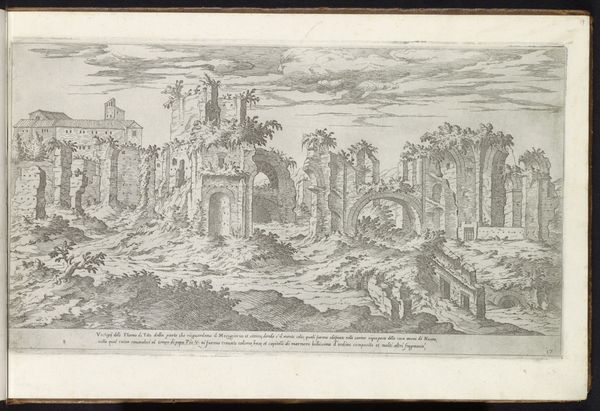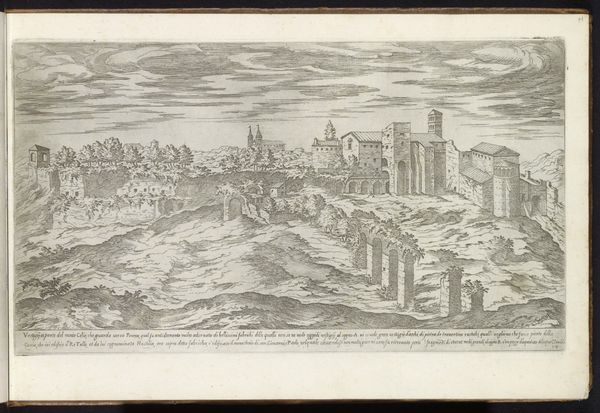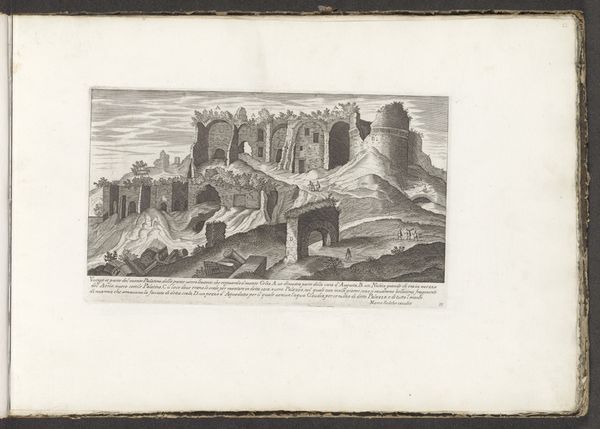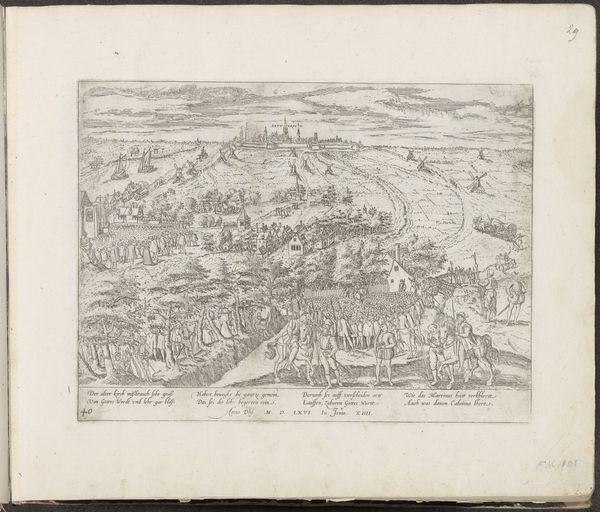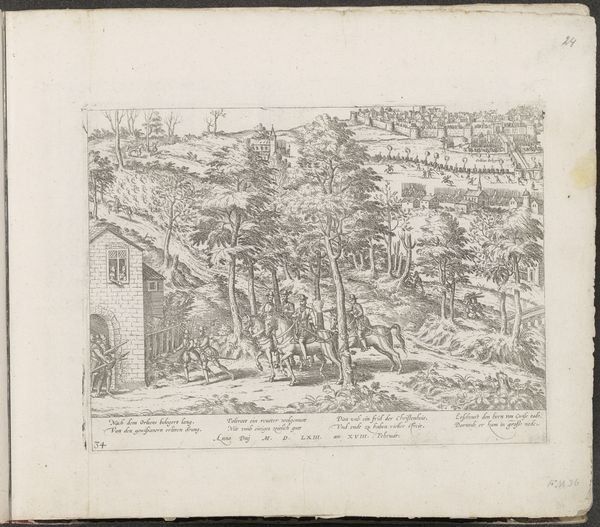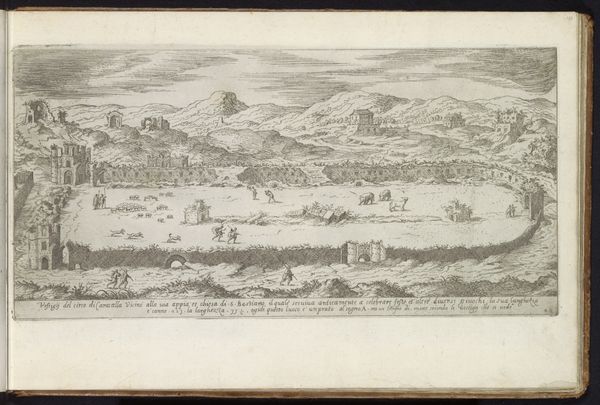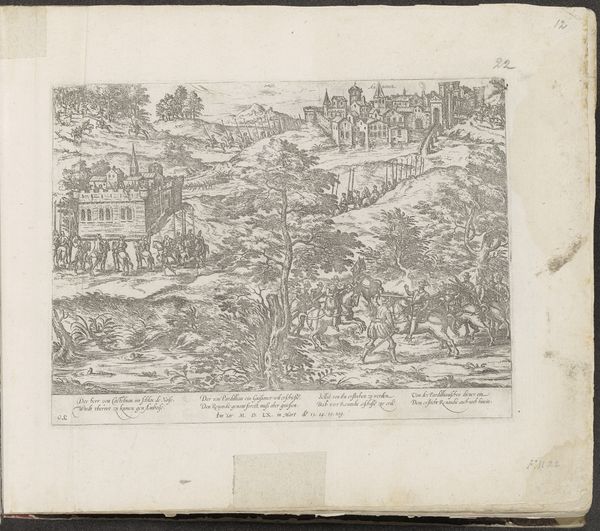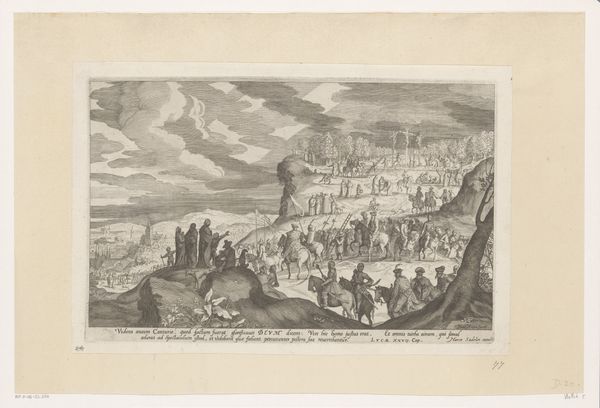
drawing, print, ink, pen, engraving
#
drawing
#
ink drawing
#
pen drawing
# print
#
pen sketch
#
landscape
#
romanesque
#
ink
#
pen
#
cityscape
#
engraving
Dimensions: height 214 mm, width 381 mm
Copyright: Rijks Museum: Open Domain
Curator: Welcome. Before us hangs Étienne Dupérac's 1575 engraving, "Ruins of the Baths of Trajan in Rome," a captivating cityscape rendered in pen and ink. Editor: It strikes me immediately as quite melancholic. The meticulous detail is compelling, yet the pervasive sense of decay is hard to ignore. The ruined structures evoke a profound sense of loss and impermanence, a very effective arrangement in the overall composition. Curator: Indeed. Dupérac, during his time in Rome, dedicated himself to documenting the city's ancient monuments, both as they stood and in their ruined state. This piece becomes especially potent when we understand the cultural context. Rome was being rediscovered and re-imagined. Renaissance artists looked back to antiquity to give themselves the language they needed. The ruin is not simply destruction. Instead, these are sites ripe for extracting social meaning. Editor: The formal choices serve that aim remarkably well. The lines are so precise. I'm fascinated by how he uses hatching to define volume and texture, especially in the crumbling brickwork. Look how the strategic placement of light and shadow amplifies the contrast between the grandeur of what once was, and its current state. Curator: Precisely! Dupérac presents not just a physical depiction, but also an allegory. It's a powerful meditation on the transience of power and the inevitable decline of civilizations. We are drawn to reflect on the legacies societies leave and how future generations perceive them. In its time, ancient Rome projected an image of invincible glory. What does it mean when the facade crumbles? Editor: And I have to add: from a purely aesthetic perspective, the composition invites a rewarding visual exploration. The architectural elements act as leading lines, drawing the eye through the landscape and inviting contemplation. We start to wonder about the play of line and form as independent forces of art. Curator: He reminds us, by portraying this fallen city, of both past glory and potential renewal. We would not have the same access to Rome if not for those that captured its image across different times and places. The gaze toward Rome informs both modern social theories, as well as new artistic representations. Editor: Seeing the balance of such artistic choices does amplify its effectiveness for a contemporary audience. Curator: Agreed. The emotional weight combined with the technical brilliance makes it all the more powerful for viewers across centuries.
Comments
No comments
Be the first to comment and join the conversation on the ultimate creative platform.
